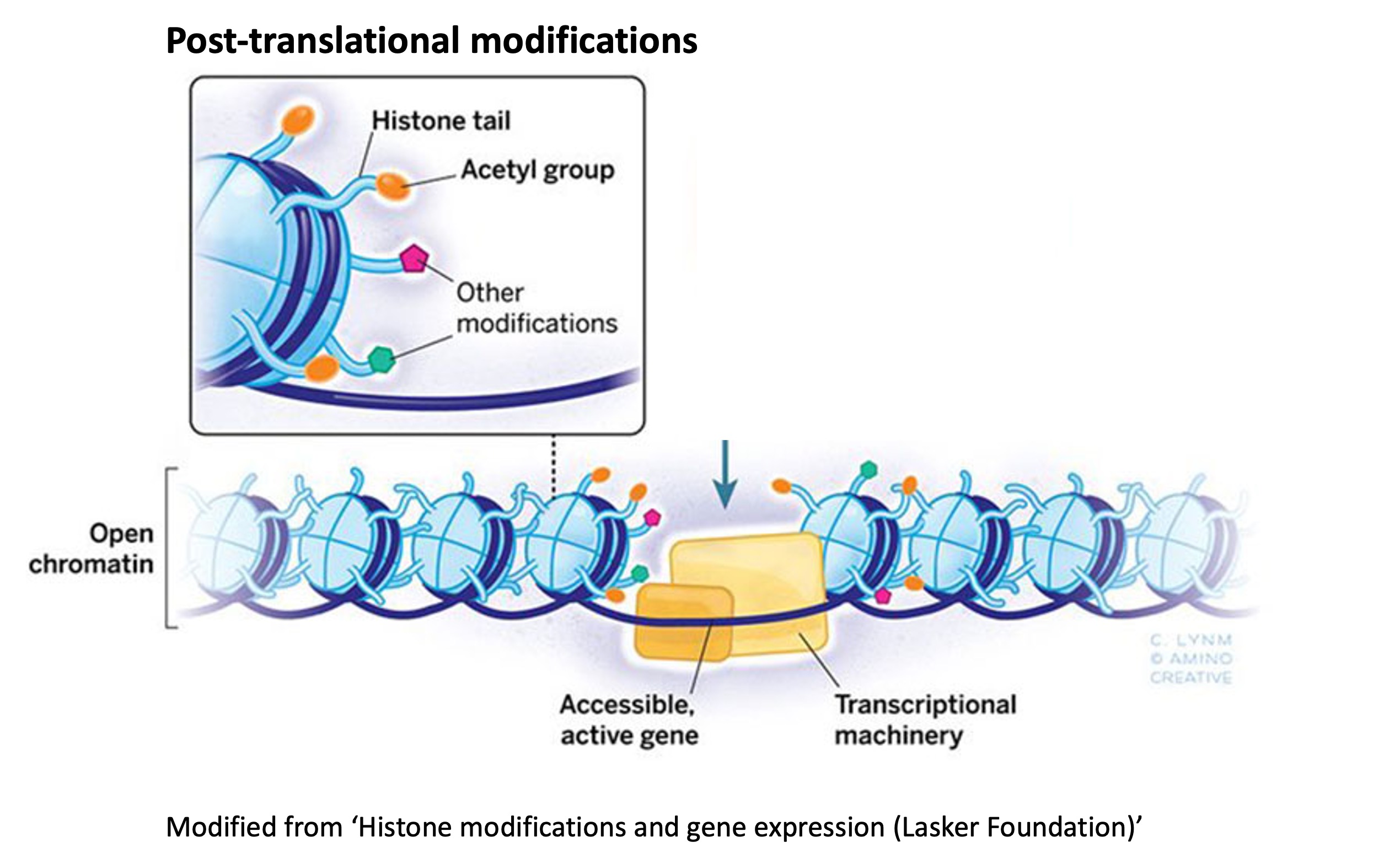Research
Transcriptional regulation of chromatin modifications during development and adaptation
Our genetic information is stored within chromatin, which is pervasively subject to an enormous combination of histone post-translational modifications (PTMs). Underlying their biological importance, disruptions in many PTMs have been tightly linked with developmental disorders and many diseases such as cancers. Fundamental questions in the field that remain poorly understood include how are PTMs regulated and specified across genomes? In other words, how does a stretch of chromatin "decide" which PTMs to assemble/disassemble? How do they "choose" the levels of those PTMs? Ultimately, we want to understand how cellular answers to these questions lead to developmental or adaptative responses.

The fission yeast Schizosaccharomyces pombe is an amazing model to study a prominent PTM called 'H3K9me' (methylation of histone H3 lysine 9). This exact PTM is present in S. pombe, humans, and many other eukaryotes. Functionally, H3K9me is generally known to promote transcriptional gene repression. How it gets assembled across the yeast genome depends on complex interactions between chromatin-binders, RNAs, and RNA processing factors (Vo et al. Cell Rep 2019; Xie*, Vo* et al. Nat Comm 2019). We have been wondering why transcription and H3K9me are so tightly linked. To investigate this relationship, we are using a wide variety of approaches including: yeast genetics and mutagenesis screening, microscopy, biochemistry, molecular biology, genomics, and CRISPR-Cas9 targeted genome editing.
.png)
Transcriptional and epigenetic regulation of aging
While working on transcriptional regulators, we unexpectedly discovered novel regulators of chronological aging in S. pombe. This form of aging models the ability of quiescent mammalian cells to begin dividing upon induction (such as when muscle cells suddenly start dividing post-injury). Transcriptional and epigenetic gene regulation have long been implicated in the aging process, but the mechanistic details continue to be elusive. This is a new and recent area that we are investigating.
.png)
Research approaches that we routinely use in the lab
Genetic assays/screens, CRISPR gene-editing and other methods of gene manipulations, cell-growth assays, PCR, chromatin immunoprecipitation, RNA expression profiling, protein purifications and western blotting, fluorescence microscopy, next-generation sequencing, bioinformatics.